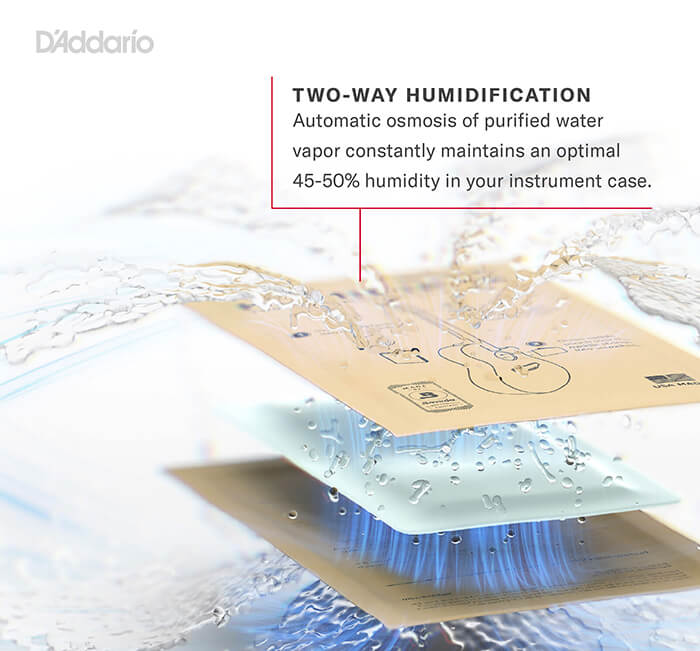HOW HUMIDITY AND TEMPERATURE AFFECT YOUR GUITAR
Guitars are delicately crafted wooden instruments. While this makes for excellent sonic enjoyment, they are not the most resilient against temperature and humidity.
Dry, cold areas can cause a guitar to dry out, crack, or lose the integrity of the glue bonds. Excessive heat can cause similar problems, warping wood and melting glue.
Overall, the most important thing to watch out for is your guitar drying out. One of the early telltale signs of a dry guitar is that it begins to play differently. The action may change, causing the strings to fret out or be raised too high from the fingerboard — or it just won't play in tune as well as before. Another symptom is when the fret ends feel sharp. This is evidence of the fretboard shrinking, causing the fret ends to extend over the fretboard.

When a guitar becomes extremely dry, it will begin to crack. You will notice this more commonly with acoustics than electrics, but it can happen to both.
So how do you prevent this type of outcome? Well, the best conditions for a guitar are when the temperature is in the 70s and there's 40-50% humidity.
Check out this expert video to learn how you can keep your guitar properly within that range, so you'll never have to worry about your guitar drying out again.




